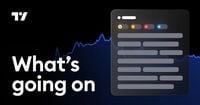U.S. mortgage rates surged last week, marking the most significant increase since October 2024, as volatility in the Treasury market rattled financial conditions. According to the Mortgage Bankers Association (MBA), the contract rate on a 30-year mortgage rose by 20 basis points to 6.81% for the week ending April 11, 2025, the highest level observed since February. This spike in rates has led to a noticeable slowdown in mortgage applications for both home purchases and refinancing.
In detail, the average contract interest rate for 30-year fixed-rate mortgages with conforming loan balances—those valued at $806,500 or less—climbed from 6.61% to 6.81%. Notably, the points associated with these loans decreased slightly from 0.63 to 0.62, which includes the origination fee for loans with a 20% down payment. This uptick in mortgage rates reflects broader economic uncertainties, including concerns over the ongoing trade war and its potential repercussions on the U.S. economy.
As a result of these rising rates, total mortgage application volume plummeted by 8.5% compared to the previous week, according to the MBA's seasonally adjusted index. Applications for mortgages to purchase homes dropped by 5%, although they remain 13% higher than during the same week last year. This year-over-year increase in demand can be attributed to a 30% increase in active inventory on the market compared to last year, as reported by Realtor.com.
Despite the year-over-year rise in applications, economic uncertainty and fluctuating rates are causing many prospective buyers to hesitate. Mike Fratantoni, senior vice president and chief economist at the MBA, commented, "Economic uncertainty and the volatility in rates is likely to make at least some prospective buyers more hesitant to move forward with a purchase." He emphasized that the current landscape is challenging, particularly as home prices have also risen compared to last year, prompting borrowers to seek options that might lower their monthly payments.
In response to the rising costs of traditional loans, more homebuyers are turning to adjustable-rate mortgages (ARMs), which offer lower initial interest rates. Fratantoni noted, "Given the jump in rates, more borrowers are opting for the lower initial rates that come with an ARM, with initial fixed rates closer to 6 percent in our survey last week." The share of ARMs in mortgage applications surged to 9.6%, the highest level since November 2023, indicating a shift in borrower preferences as they seek to manage costs amidst rising rates.
For those considering refinancing, applications fell by 12% last week but were still 68% higher than the same week last year, reflecting the broader trend of higher demand amid lower rates from a year ago. Rates at this time last year were 32 basis points higher, providing some context for the current refinancing activity.
As the week progressed, mortgage rates began to move lower, signaling a calmer market than the previous week. However, experts caution against complacency. Matthew Graham, chief operating officer at Mortgage News Daily, warned, "Despite the friendly move and the relative calm, this still isn't an environment where it makes sense to take anything for granted in terms of today's rates being available beyond the present day." This statement underscores the potential for continued fluctuations in the mortgage market, leaving both buyers and lenders in a state of uncertainty.
In summary, the recent spike in U.S. mortgage rates has created a challenging environment for homebuyers and lenders alike. With rates reaching their highest level since February and economic uncertainties looming, many are left to navigate a complex landscape of fluctuating interest rates and evolving market conditions. As buyers adapt by seeking alternative financing options like ARMs, the mortgage landscape continues to shift, reflecting broader economic trends and concerns.





